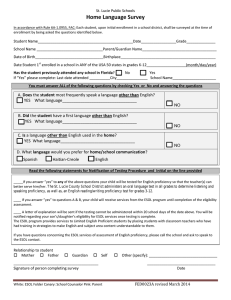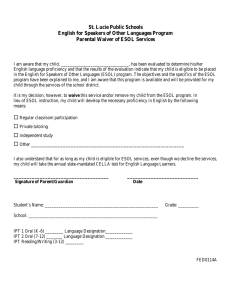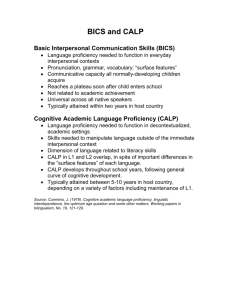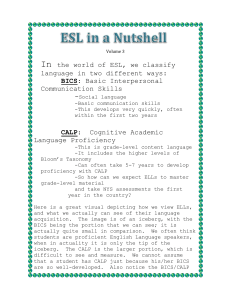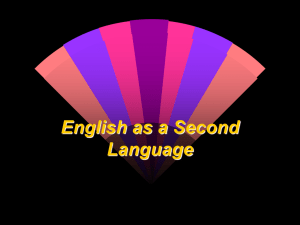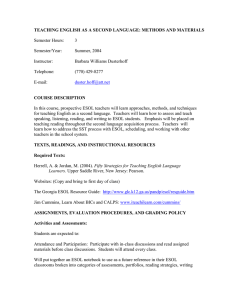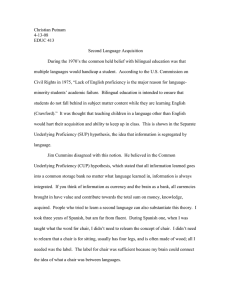The World is in Our Hands Rose Tree Media School
advertisement
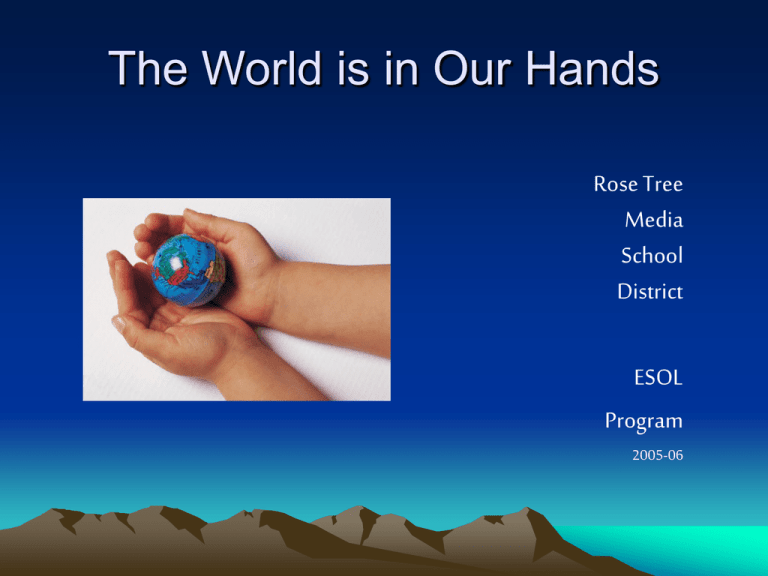
The World is in Our Hands Rose Tree Media School District ESOL Program 2005-06 ESOL Services • 99 ESOL students – – – – – – – new students enter almost every week Indian Lane Elementary – 11 Glenwood Elementary – 13 Media Elementary – 25 Rose Tree Elementary – 8 Springton Lake Middle – 22 Penncrest High School - 20 • Students with 27 different languages • Students from 29 different countries World Languages • European languages – Spanish – French – Polish – Russian – Swedish – Romanian – Hungarian – Italian – Portuguese – Albanian – Greek – Ukrainian • African Languages – Swahili – Twi – Africaans • Asian Languages – Gujarati – Malayalam – Marathi – Hindi – Cantonese – Mandarin – Burmese – Tagalog – Korean – Vietnamese – Cambodian – Persian (Farsi) Countries of Origin Argentina Belarus Brazil Cambodia China Colombia Costa Rica France Ghana Hungary India Iran Italy Latvia Liberia Myanmar Pakistan Philippines Poland Puerto Rico Romania Russia South Africa South Korea Sweden Taiwan Tanzania Ukraine Vietnam ESOL Testing Instruments • IPT – Idea Proficiency Test • Entrance, Placement, and Exit decisions • SELP – Stanford English Language Assessment • Pennsylvania requirement BICS & CALPS Basic Interpersonal Communicative Skills • Universal aspects of language proficiency that are normally acquired by all native speakers of any language • Usually by ages 5-6, all children have developed BICS in their first language • Language skills needed for every face-to-face comunication (personal and social situations) • Contexts are clear and generally concrete • Not necessarily related to academic success • May take up to 2 years to develop in a second language (L2) Cognitive Academic Language Proficiency • Those language skills associated with literacy and cognitive development • Language skills required to go beyond ordinary social communication • Cognitively demanding, decontextualized • Language skills needed for reasoning, problem solving, or other cognitive processes required for academic achievement in subject matter • CALP development in a first language (L1) contributes to the development of CALP in a second language (L2) • May take 5-7 years to develop in a second language (sometimes 9-11 years, depending upon L1 CALP, age and other variables) Communication Tools • Language Line – A “conference call” – District supplied through AT&T – Place the call to LL, tell them the language of the person, their name and phone number – Explain what you will be talking about and any specialized vocabulary you will be using – Translator places the call to the parent – Talk to the parent, giving time for the translator to translate for you. – IT’S EASY!! Communication Tools • TransACT – A new data base coming to RTMSD soon – Includes all required NCLB forms in many languages – Includes some “housekeeping” forms schools often need If you get nothing else… • Please think of your students as a RESOURCE for you and your classes • Students are not coming in with a DEFICIT just because they do not speak English. • Students come with a broader WORLD VIEW and EXPERIENCES your native speakers do not have (most likely). • American students can LEARN from the ESOL students as they HELP the newcomers learn English.



